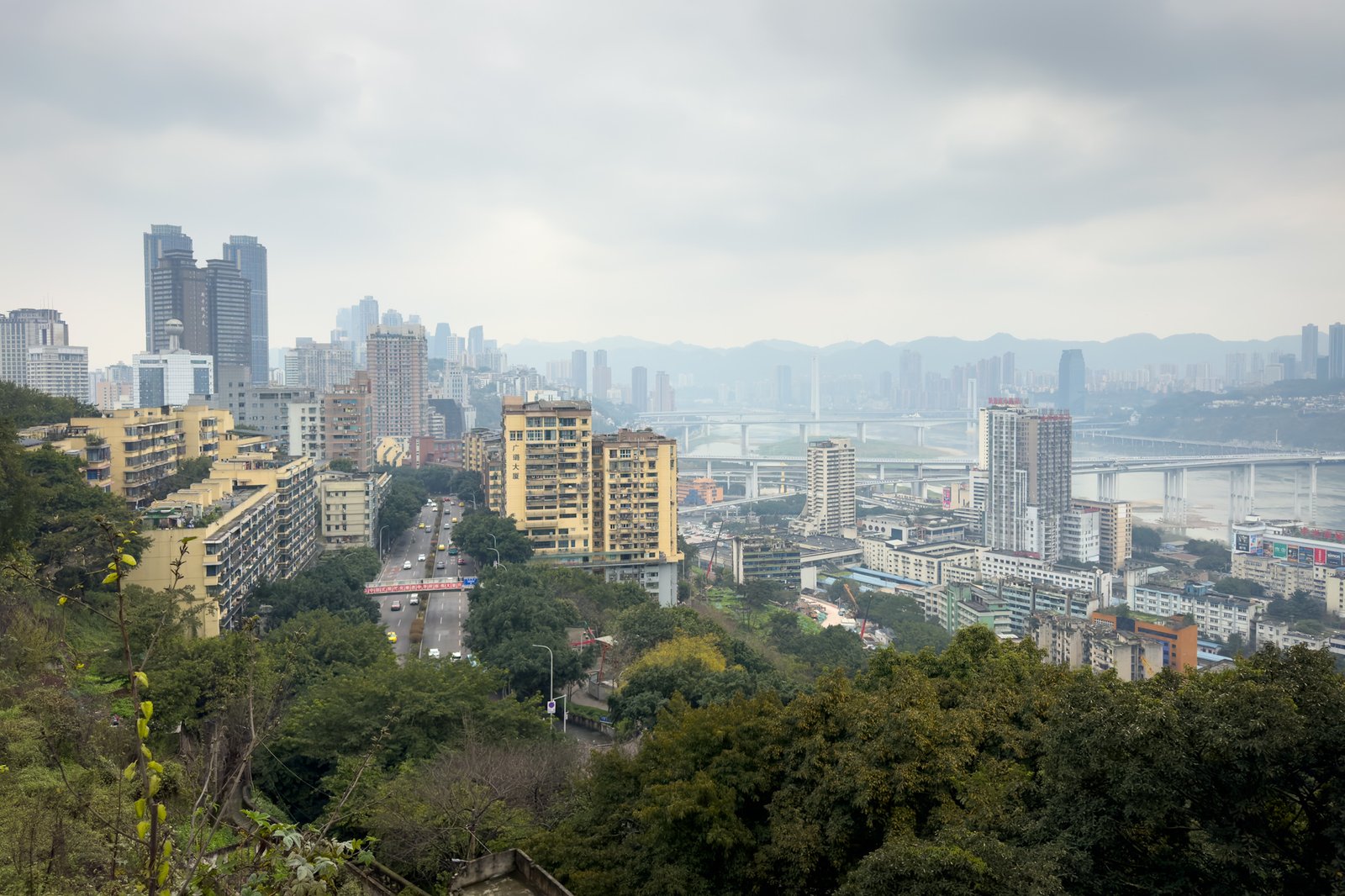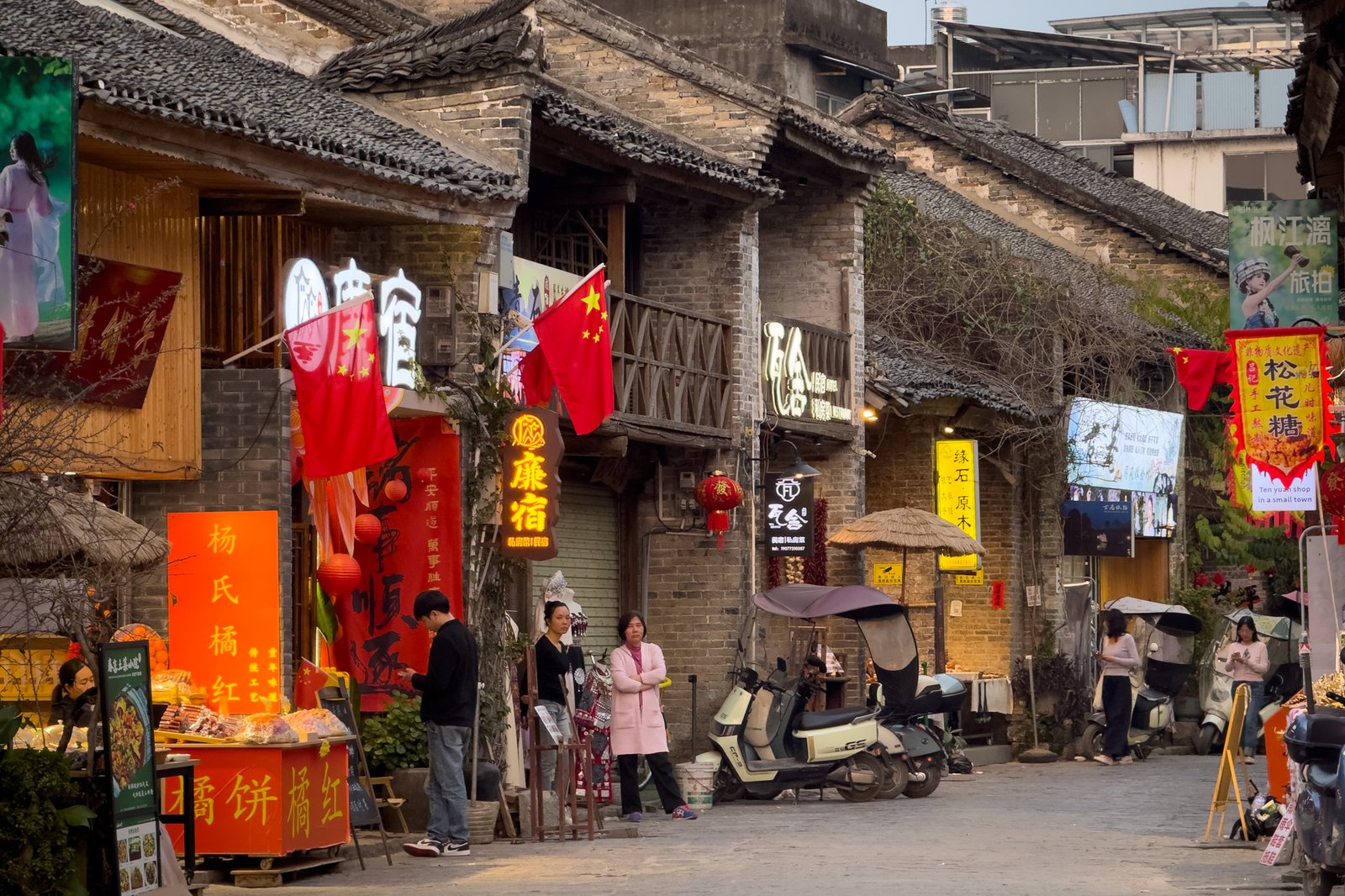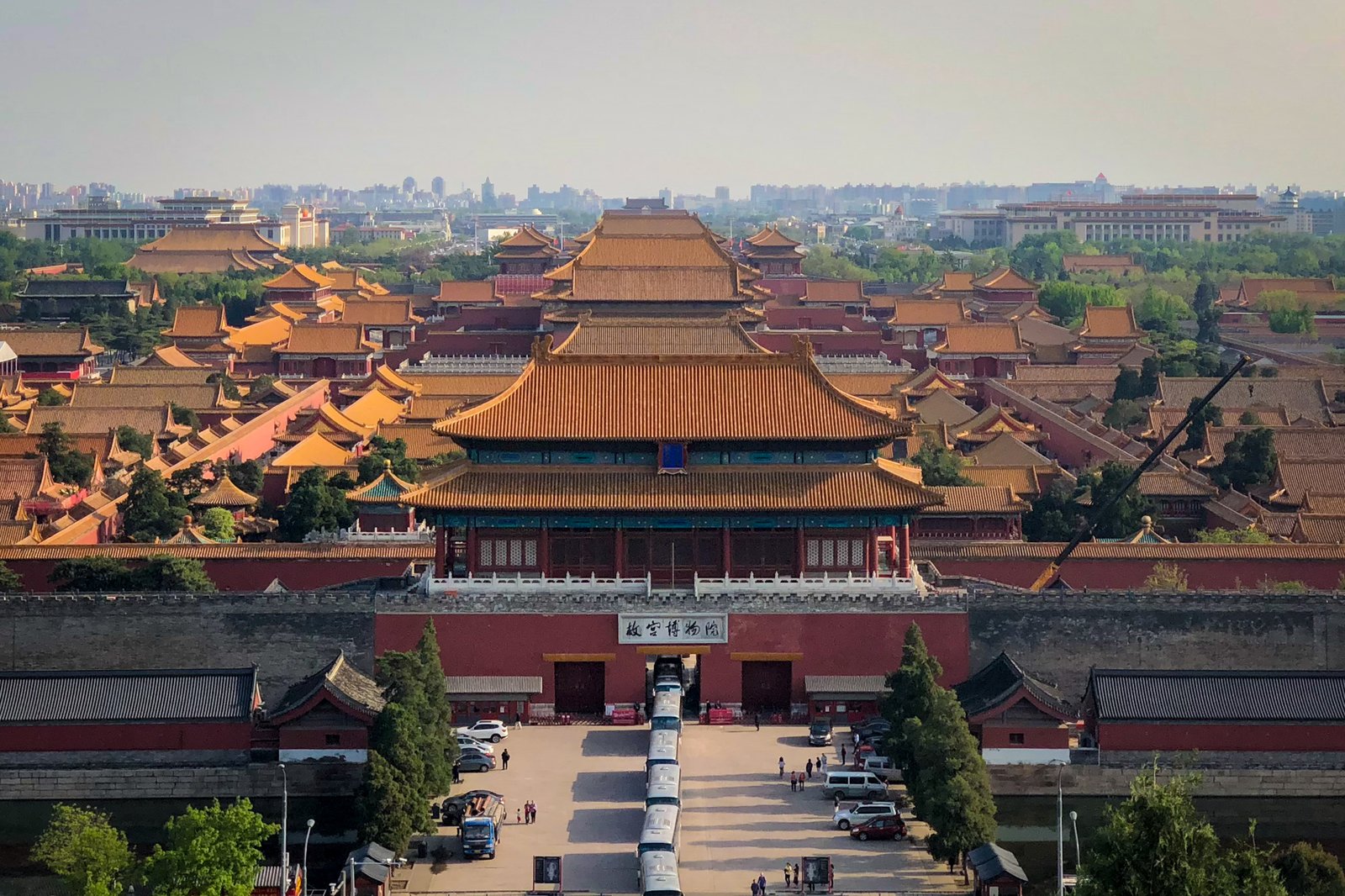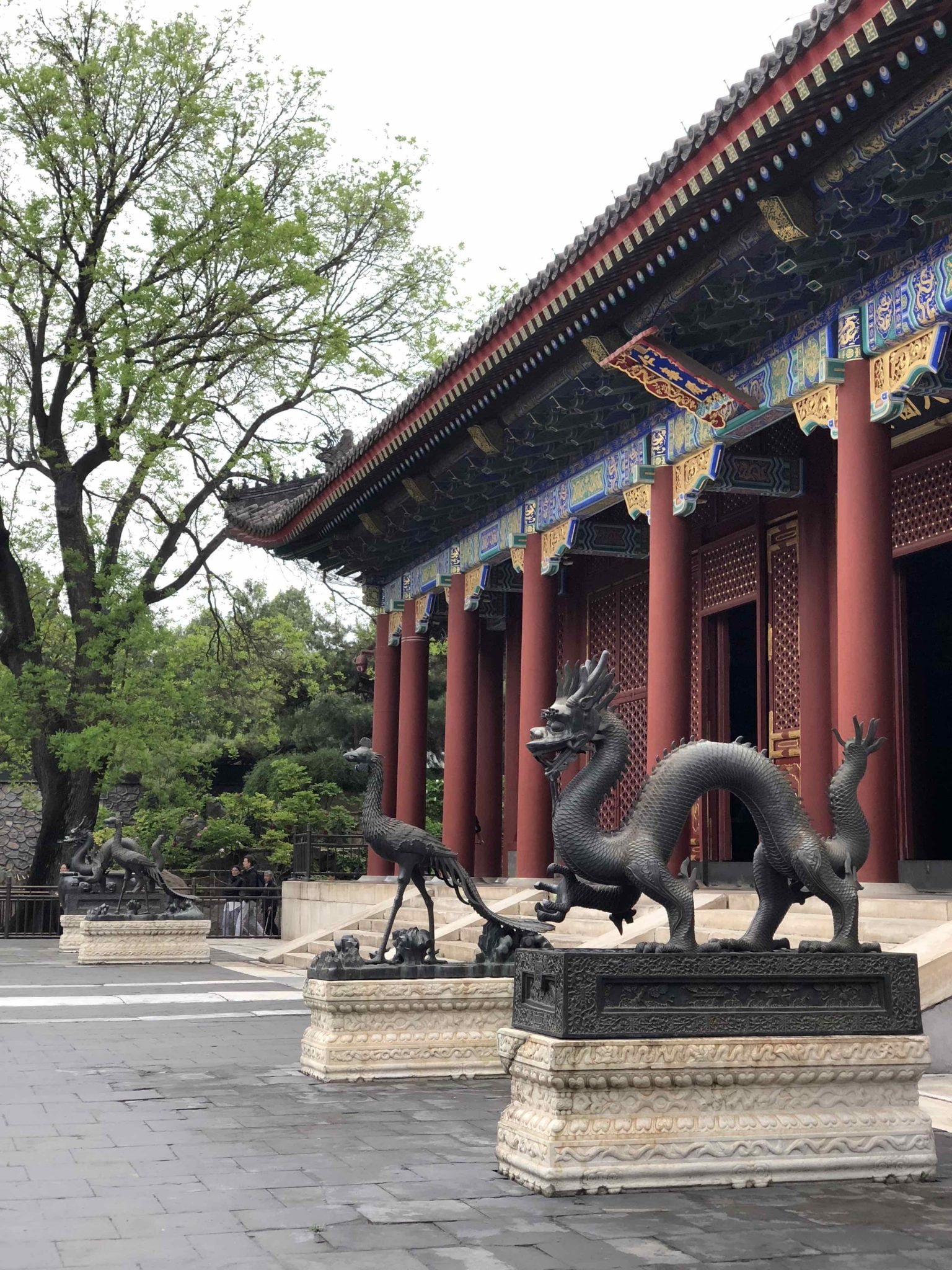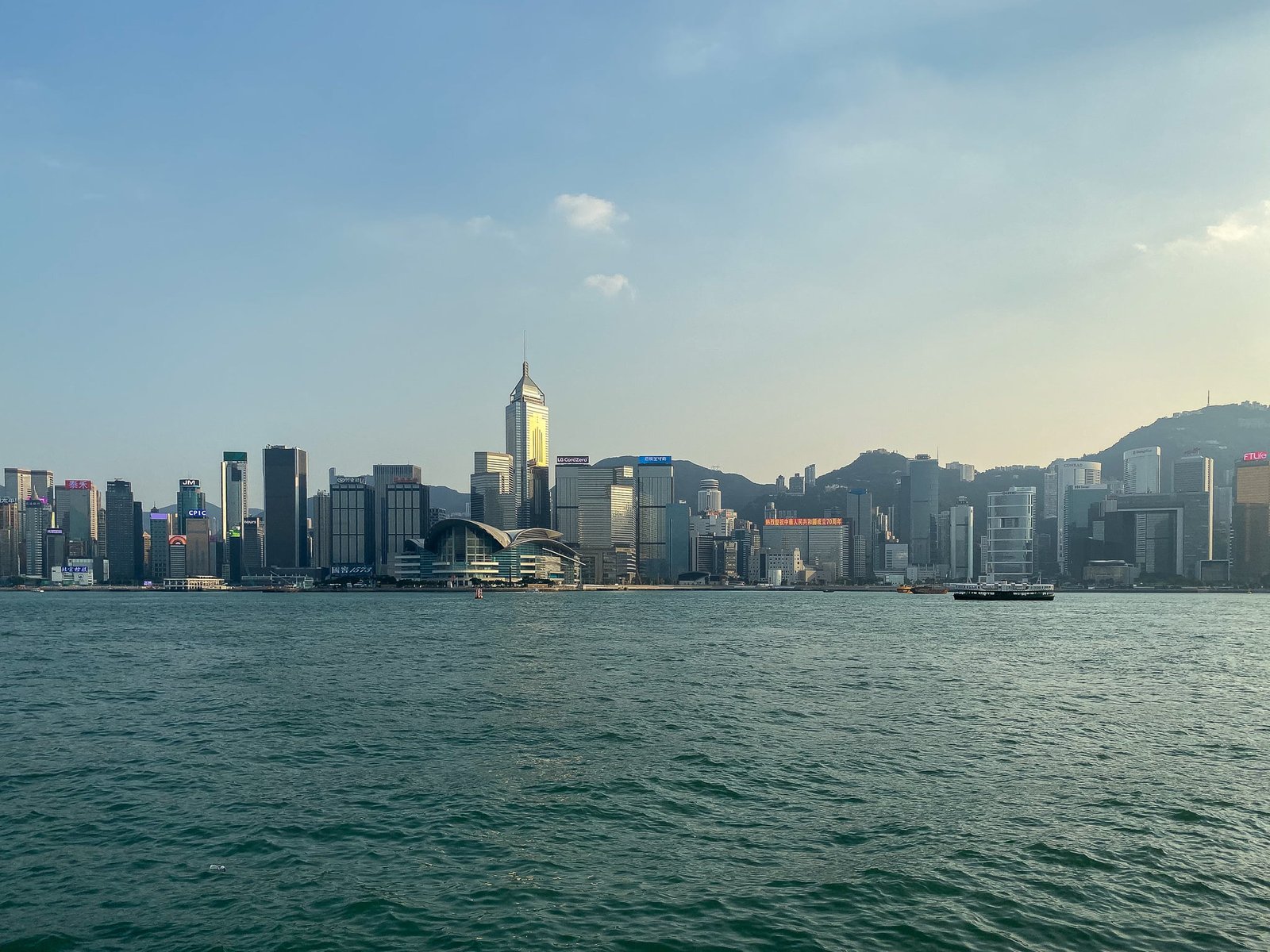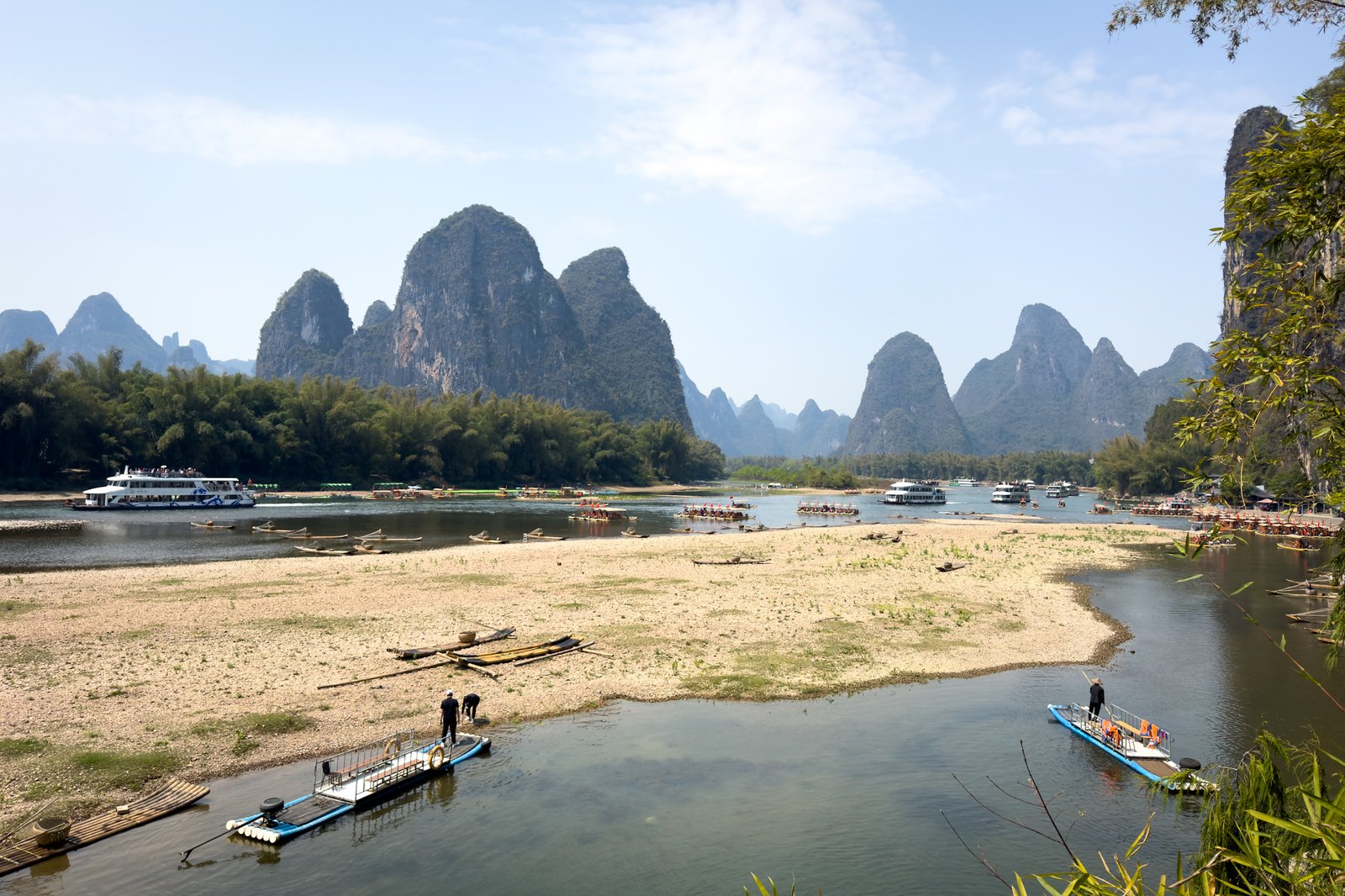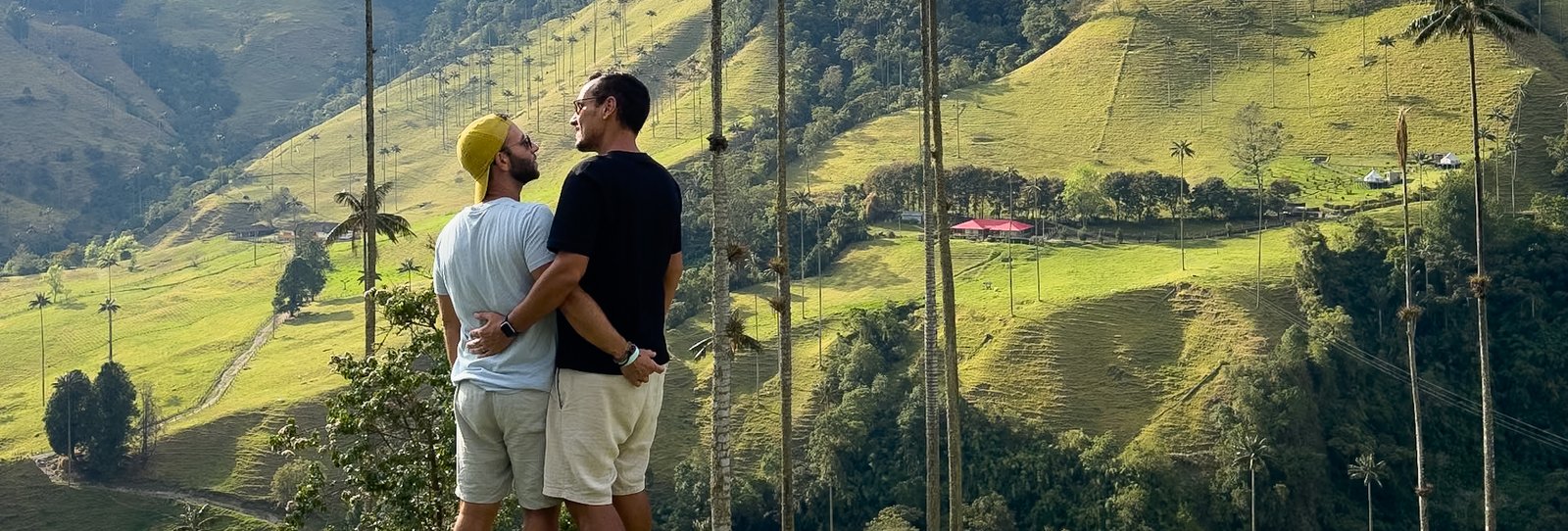If you’re planning a trip and looking for what to do in Macau, you’ve come to the right place. We’ve always been fascinated by the fusion of Portuguese heritage and Chinese culture, and in early 2025, during our second trip around the world, we finally had the opportunity to visit the city. With China’s visa exemption for some countries, including Portugal, visiting Macau has become even easier.
Although many associate Macau with casinos — and it’s true that gaming tourism dominates the local economy — the city has much more to offer. The historic center, classified as a UNESCO World Heritage Site, takes us back in time, with churches, temples, and narrow streets that tell centuries of history. The gastronomy reflects this unique cultural fusion, and just walking through the streets allows you to feel the city’s vibrant energy.
We explored Macau for two days and created a Macau itinerary that combines history, culture, and unforgettable flavors.
Table of Contents
Is Macau More Than Just Casinos?
Despite its reputation for extravagant hotels and neon lights, Macau is a destination where Portuguese and Chinese cultures blend in a unique way. Beyond the skyscrapers, you’ll find narrow streets with colonial houses, temples hidden among modern buildings, and markets filled with the scent of incense and pastel de nata.
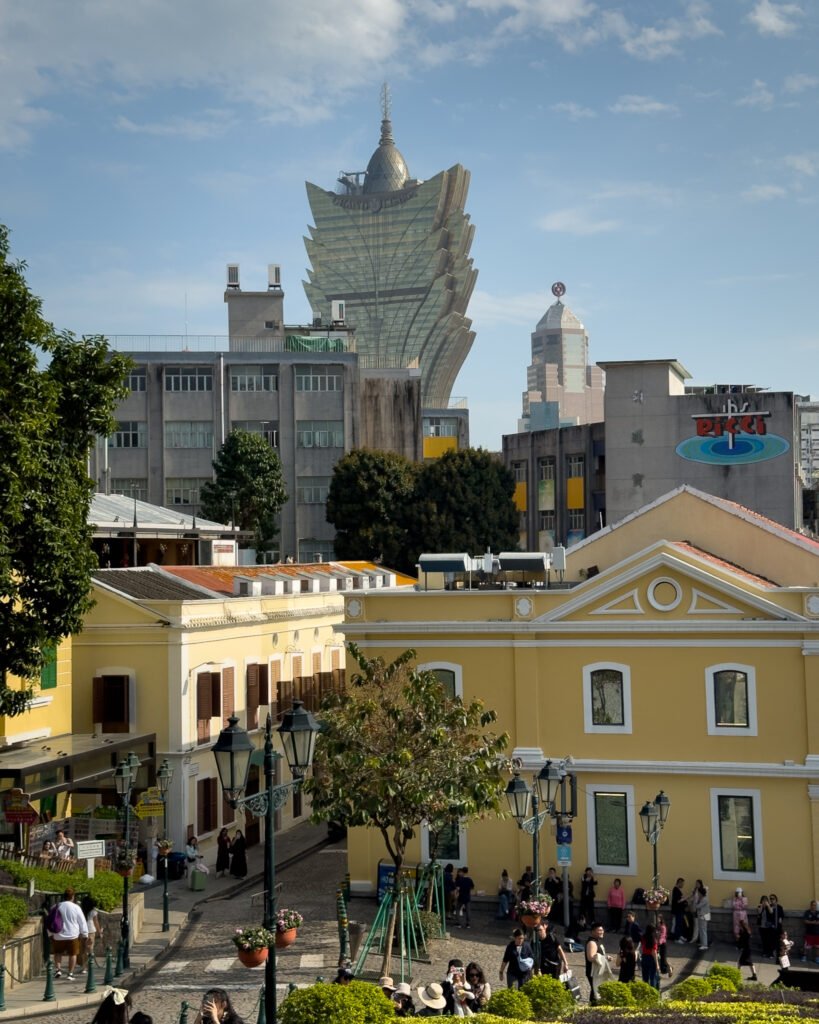

The historic center is a true treasure, where European architecture contrasts with Asian influences. In Coloane, far from the casino buzz, you’ll find peaceful beaches and fishing villages that seem frozen in time. Macanese cuisine, with dishes like char siu pork and the unique flavors of Portuguese-Chinese fusion, is one of the highlights of the trip.
If you give this more authentic side of Macau a chance, you’ll realize there’s so much more to discover.
How Long to Stay in Macau?
We spent two full days in Macau, which allowed us to explore both Taipa and the Macau Peninsula, soak in the local culture, and, of course, indulge in the food.
If you’re short on time, a day and a half might be enough to see the main attractions. But if, like us, you enjoy traveling at a relaxed pace, two full days are ideal to truly experience the essence of the city.
In the next sections, we’ll share our Macau itinerary, including the best places to visit, where to eat, and tips to make the most of your trip!
Where to Stay in Macau
When choosing where to stay in Macau, the key is understanding the different areas. The city is mainly divided between the Macau Peninsula and Cotai Island. The Peninsula is home to the historic center, local markets, and most cultural attractions, while Cotai is Macau’s “Las Vegas,” filled with luxurious resorts and massive casinos. There’s also the Taipa district, another excellent area to stay in Macau. Depending on the type of experience you’re looking for, one area may be more suitable than another.
Check out the best areas to stay in Macau.

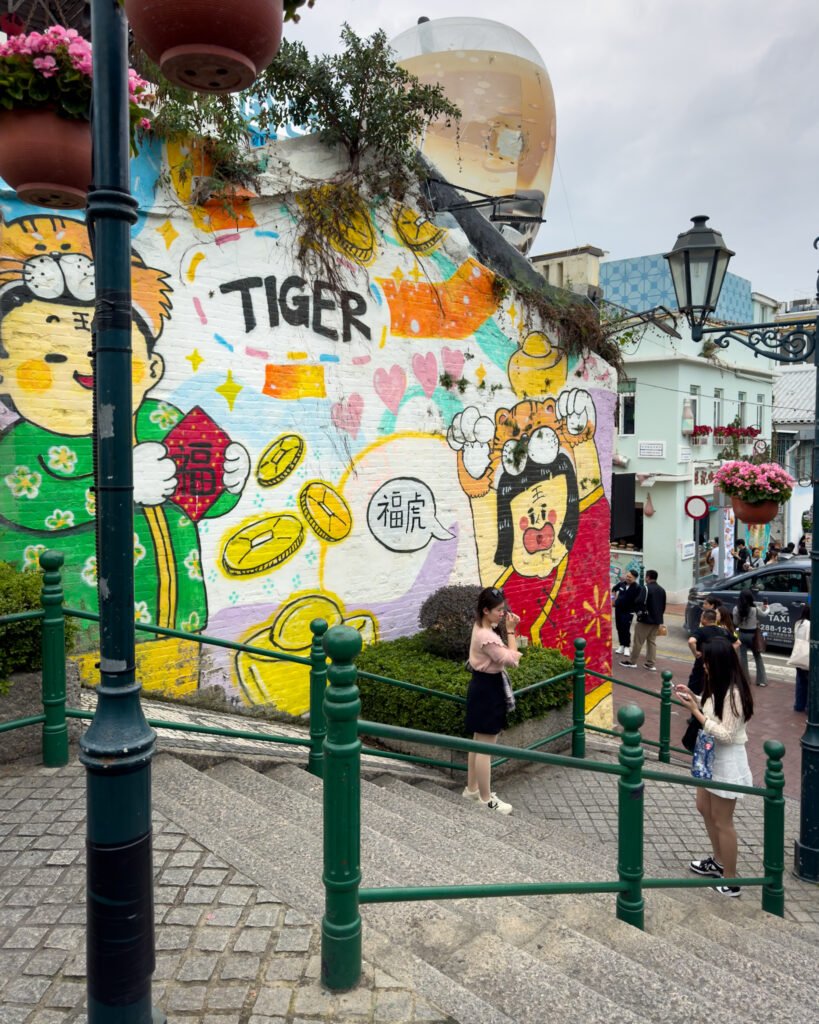
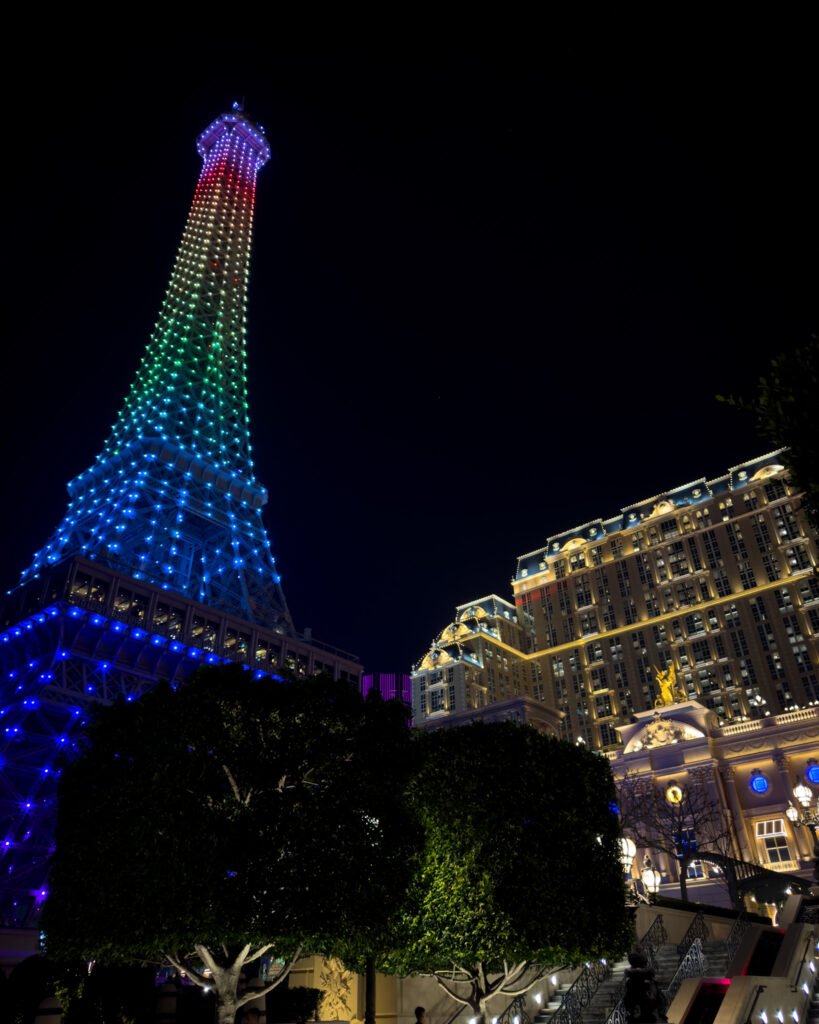
2-Day Macau Itinerary
Day One in Macau: Between Tradition and the Glitz of Casinos
Macau is a city of contrasts, and the first day is perfect for exploring both sides of this unique fusion: in the morning, history and culture in the Macau Peninsula; at night, luxury and grandeur on the Cotai Strip.
Macau Peninsula: Historic Streets and Authentic Flavors
We start at Rua da Felicidade, once one of the city’s busiest districts, now a picturesque street filled with red façades and traditional shops. From there, we head to Senado Square, the historic heart of Macau, surrounded by colorful colonial buildings. We step inside the St. Dominic’s Church, with its impressive Baroque interior, and visit Lou Kau Mansion, a 19th-century traditional Chinese house showcasing the blend of two cultures.
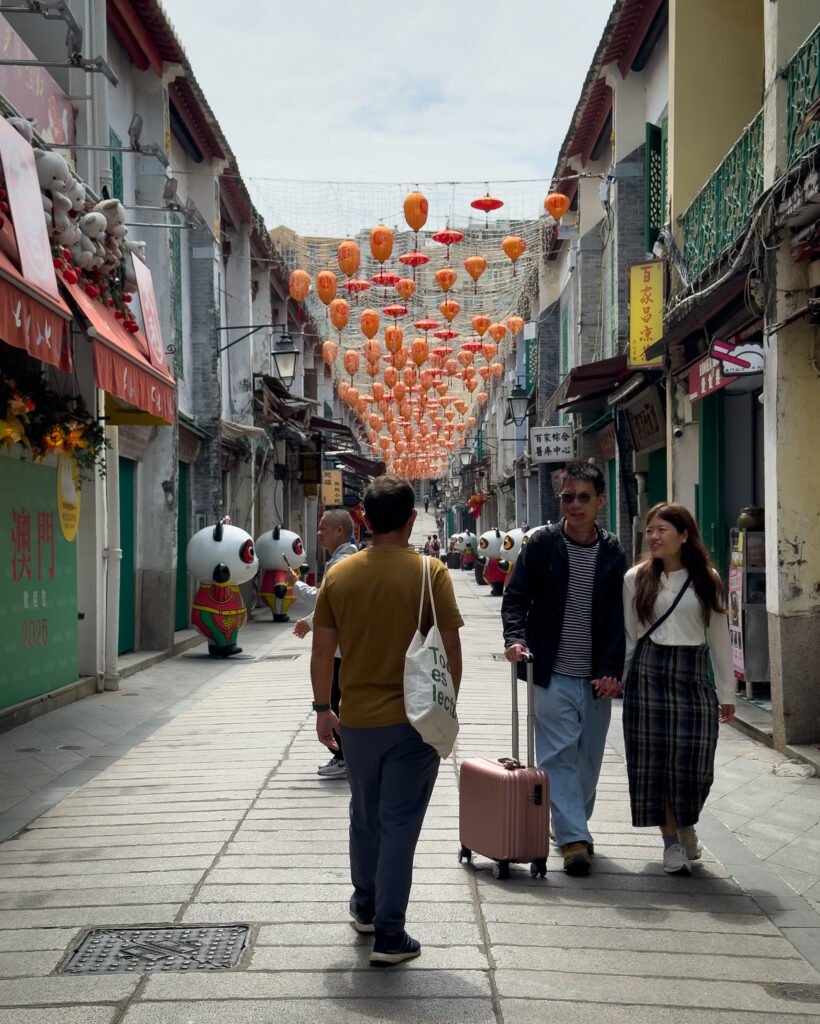


We wanted to try the famous egg tarts from Margaret’s Café e Nata, but the line was endless. Instead, we took a short detour to Manteigaria, one of our favorites in Lisbon – and it was absolutely worth it!
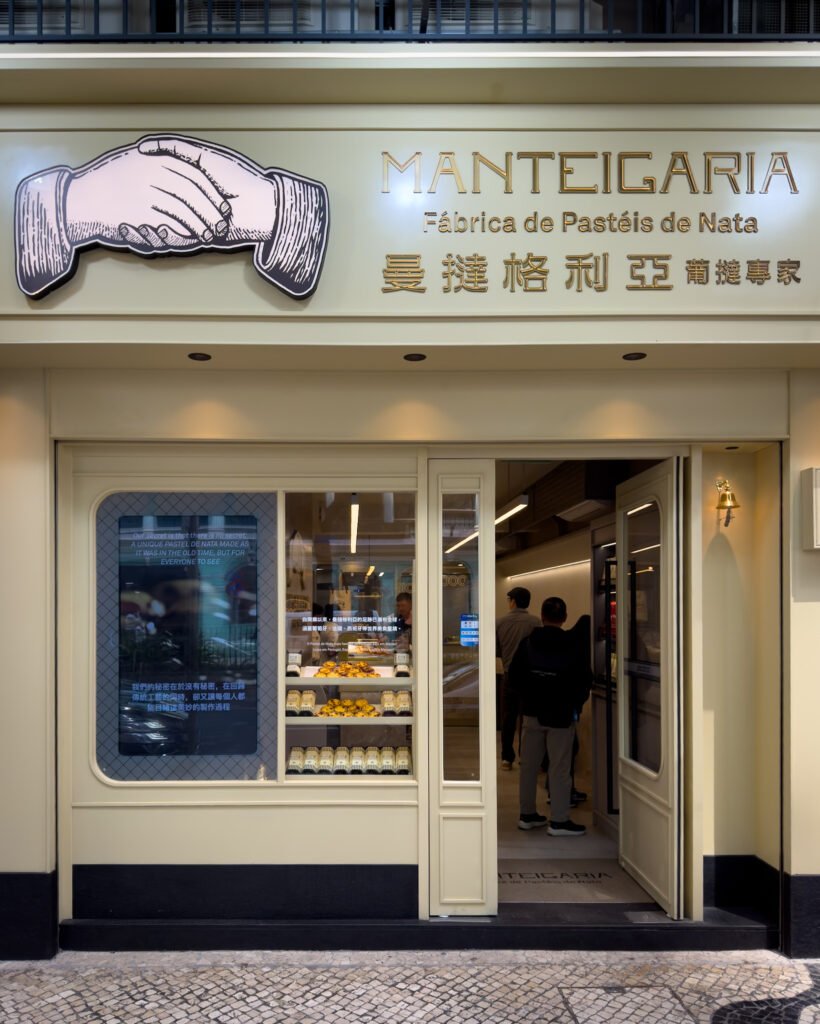
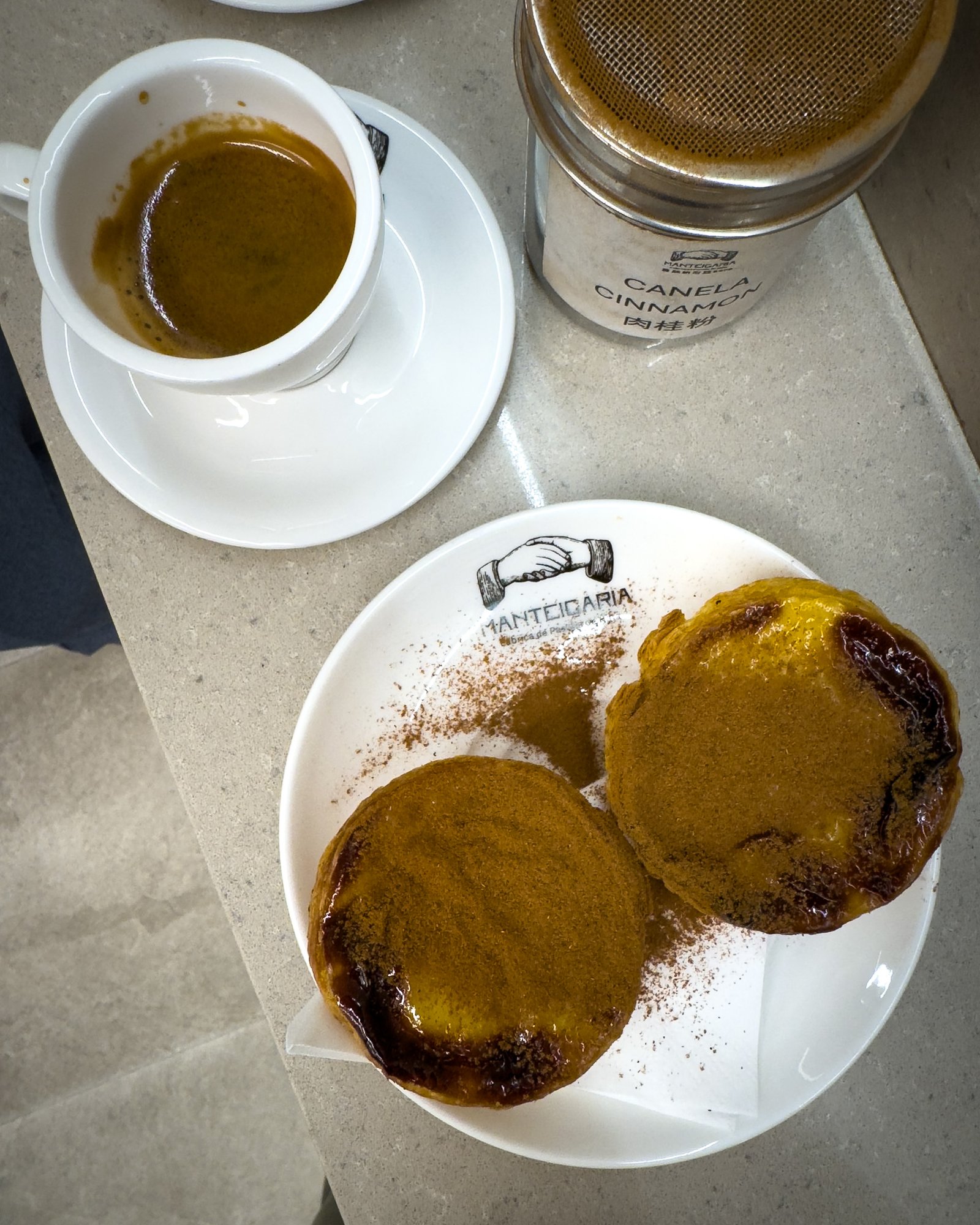
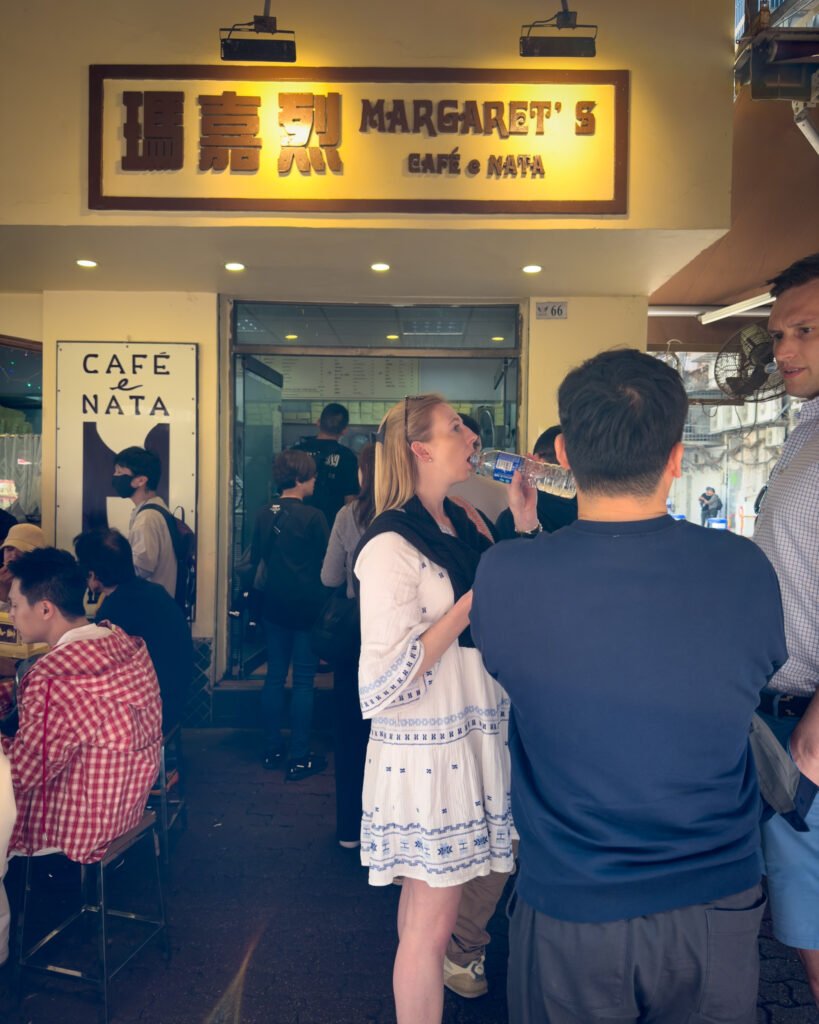
We passed by the iconic Grand Lisboa Macau and Casino Lisboa, symbols of the city’s extravagant side, before making a curious stop at the Wallace Fountain, a drinking water fountain gifted by Paris to Macau.
For lunch, we chose Riquexó, a Macanese restaurant where we tried minchi, considered Macau’s national dish, along with some codfish fritters to satisfy our Portuguese cravings.

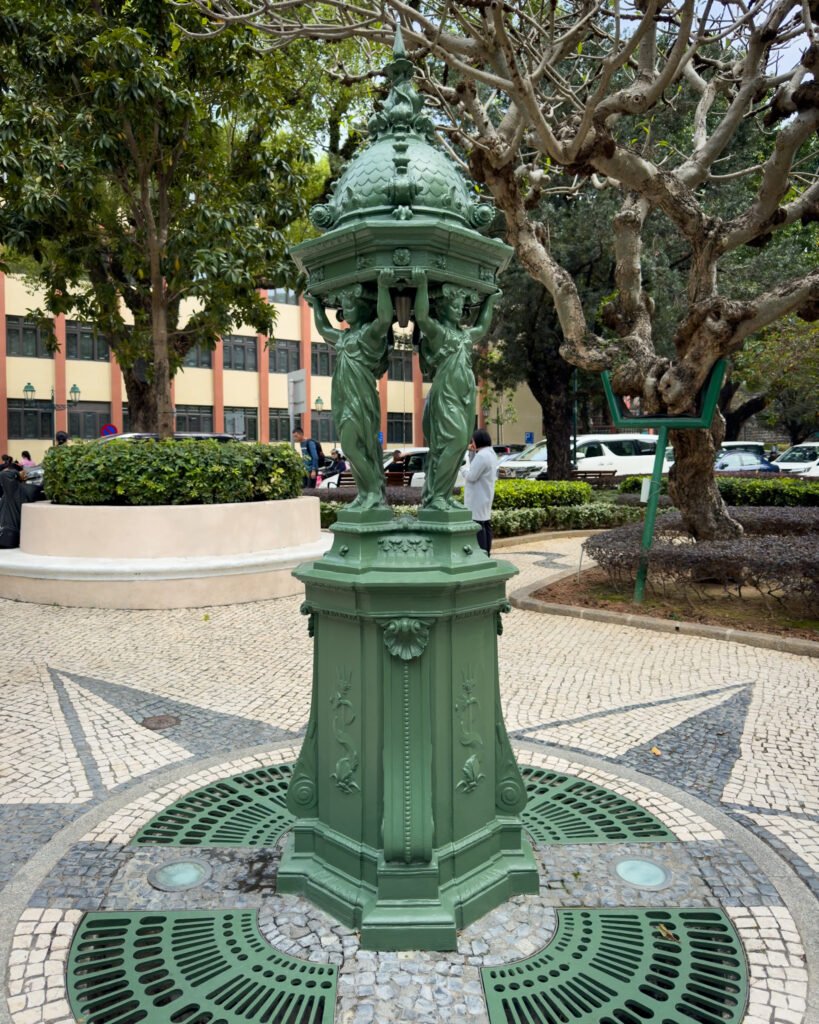
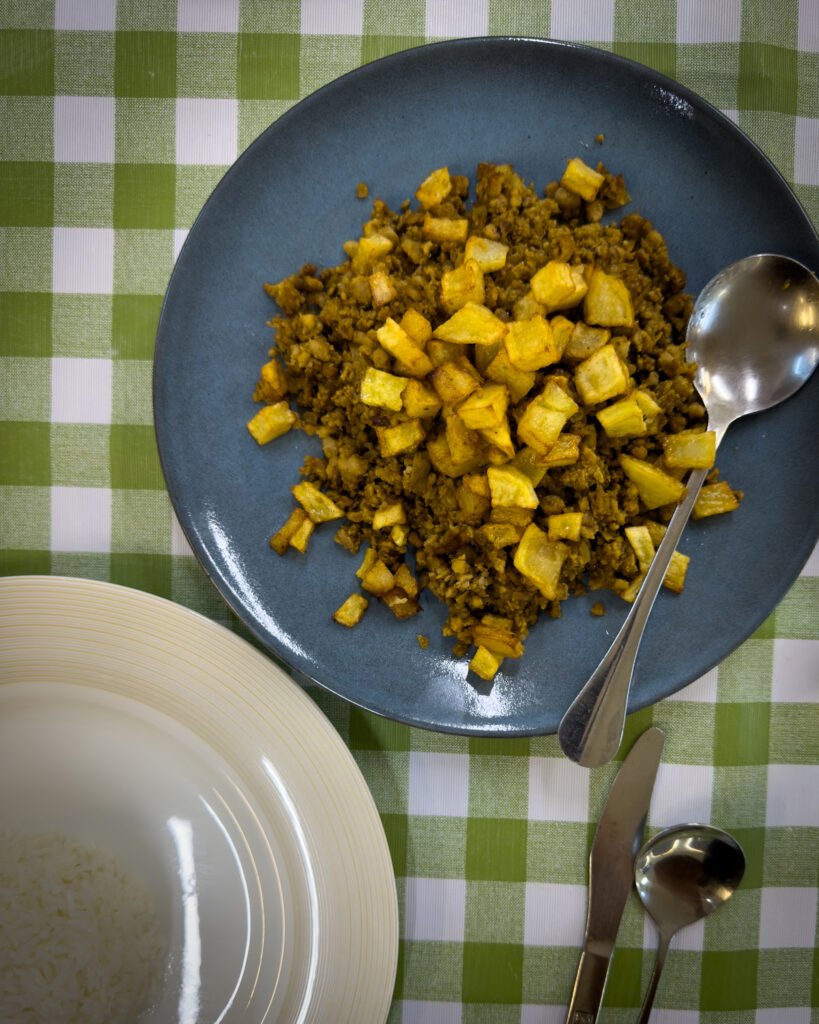
Next, we explored Tap Seac Square, one of the most beautiful in the city, and took a break at ORA Coffee, a lovely third-wave coffee shop. After that, we visited St. Lazarus Church and strolled through the surrounding neighborhood, one of the most authentic areas in Macau.
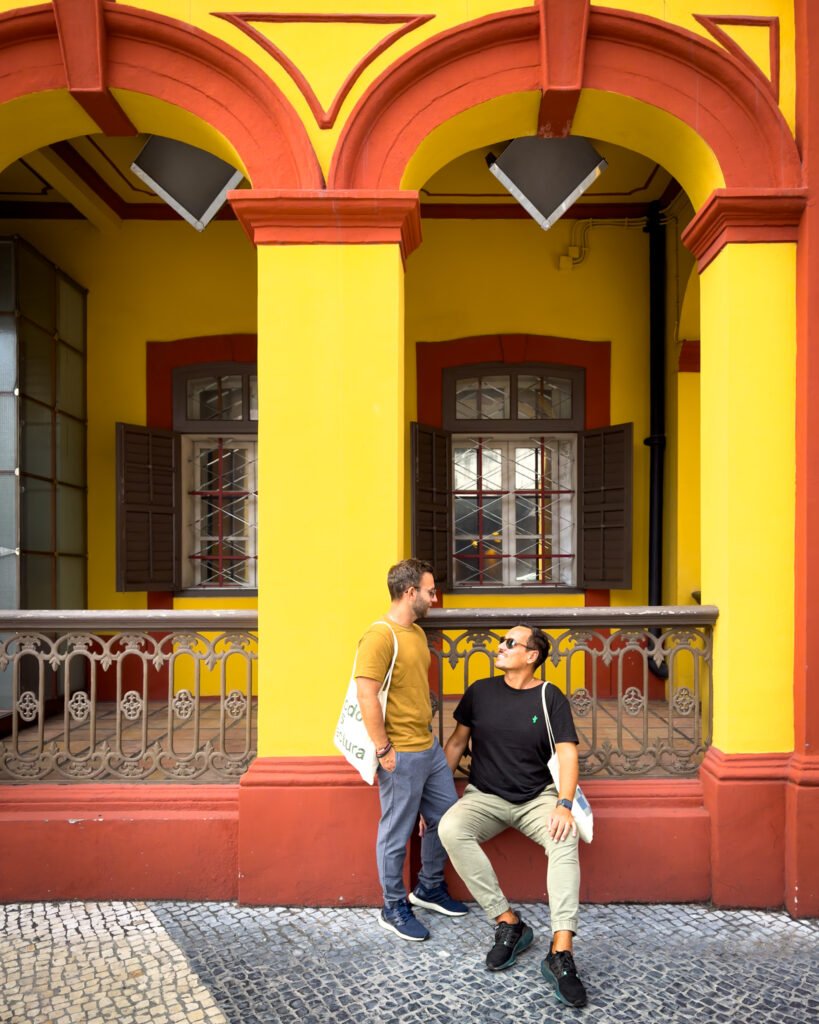
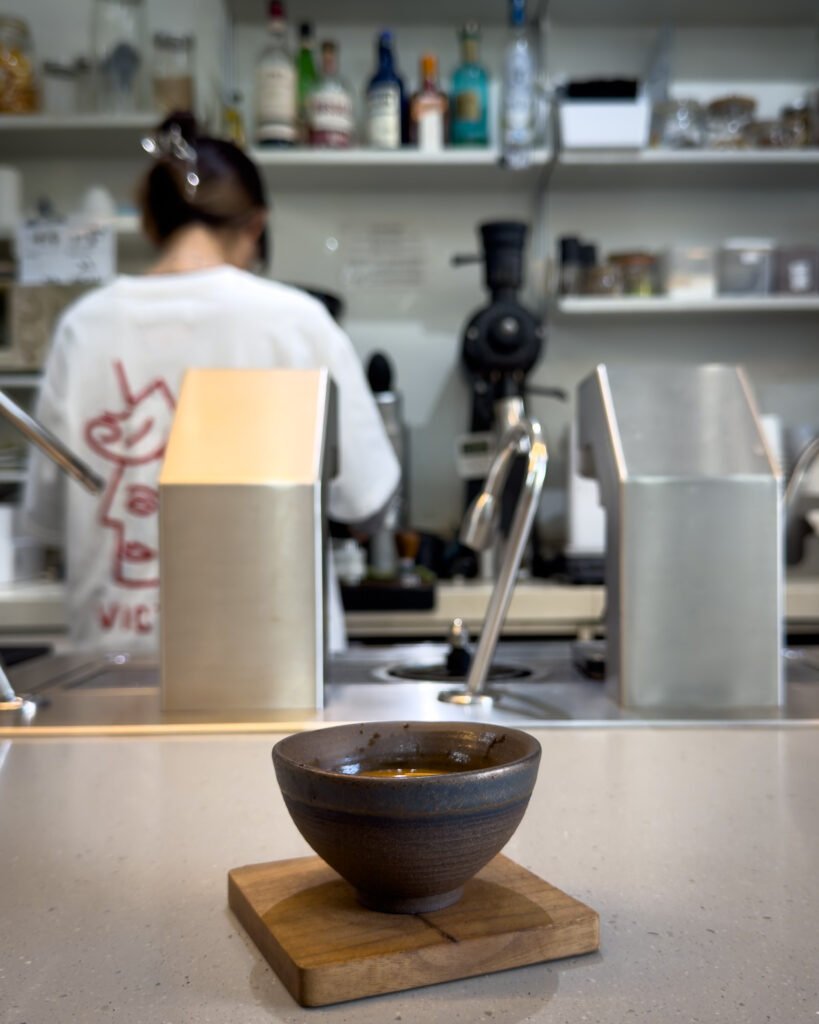
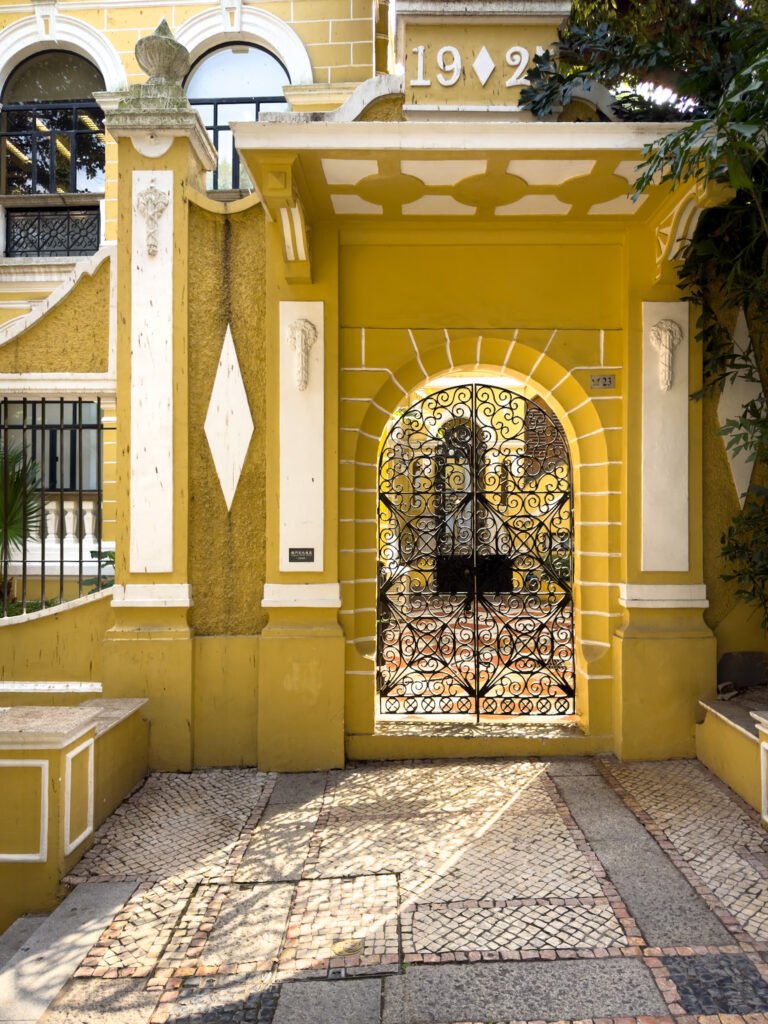
The day on the peninsula ends at the Ruins of St. Paul’s, the city’s iconic landmark, followed by a stroll along Rua dos Ervanários, filled with traditional shops and local delicacies.
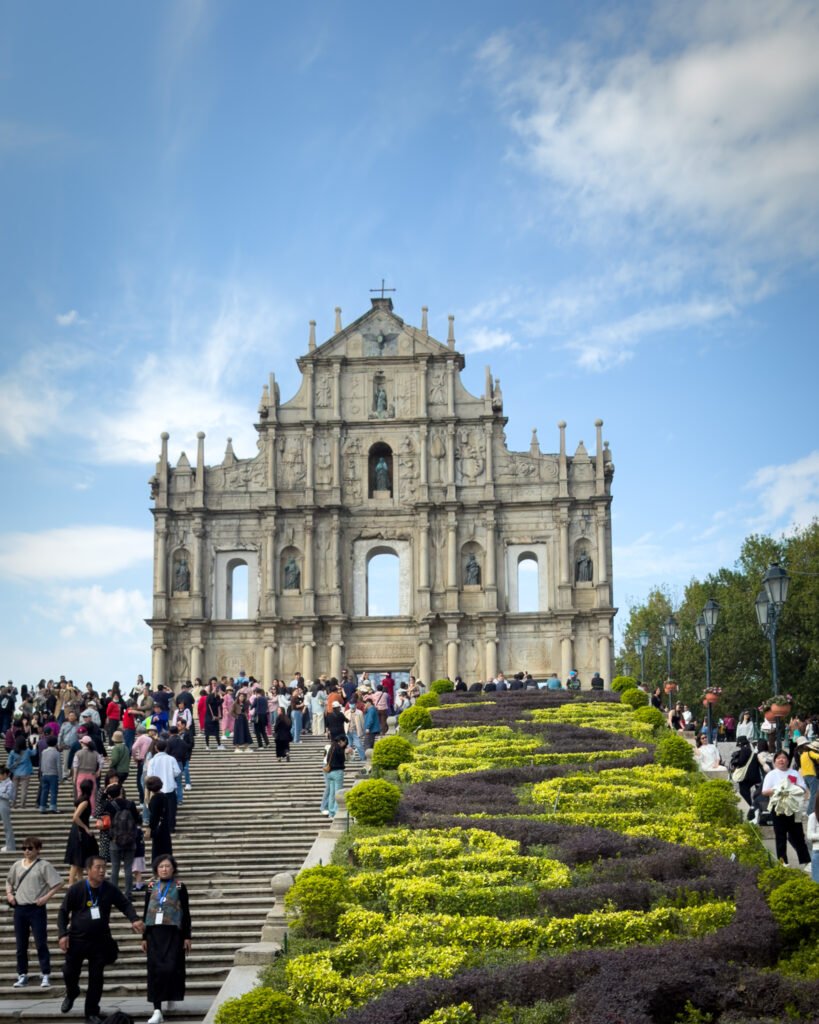
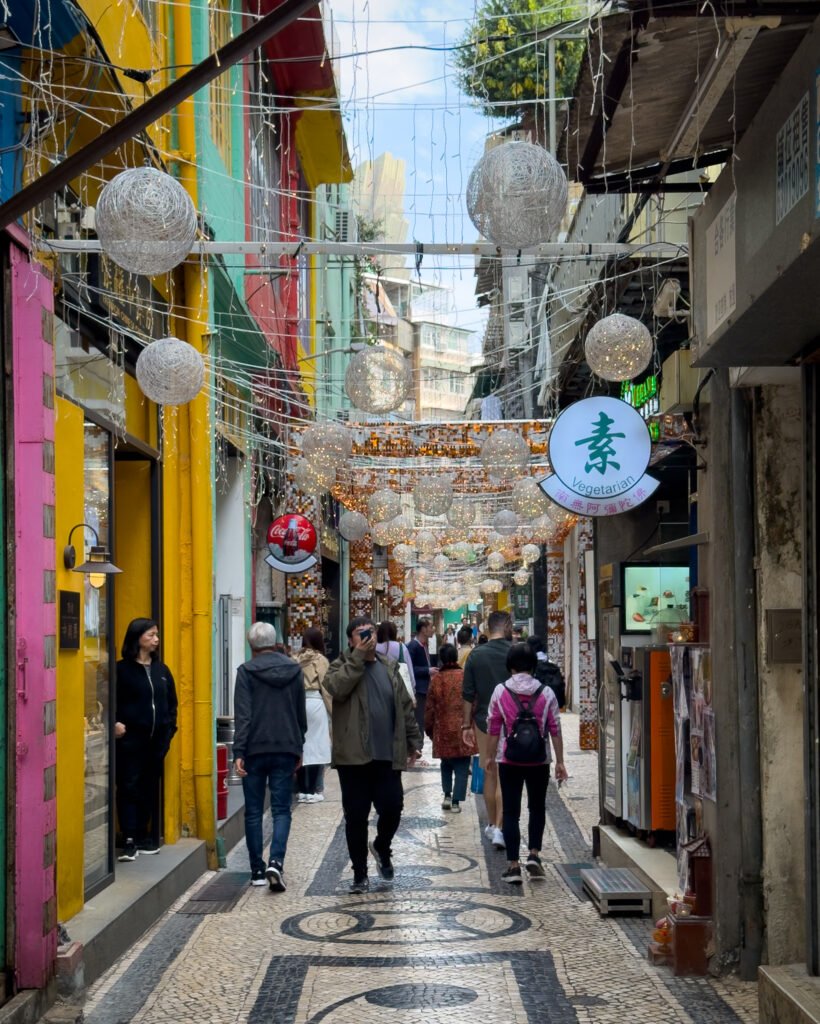
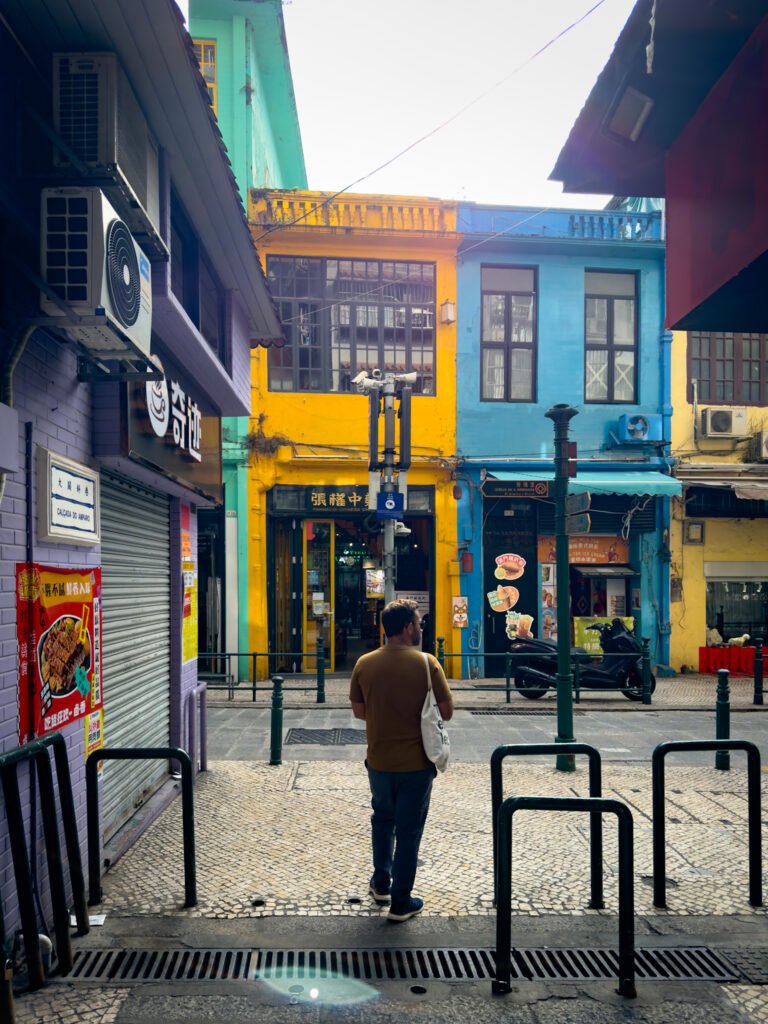
Cotai Strip: Las Vegas, Macau-style
In the late afternoon, we took a bus to the Cotai Strip, a journey of about 30 minutes. As soon as we arrived, we were overwhelmed by the towering buildings, replicas of famous landmarks, and background music in the streets. We’ve never been to Las Vegas, but we can see why so many people make the comparison.
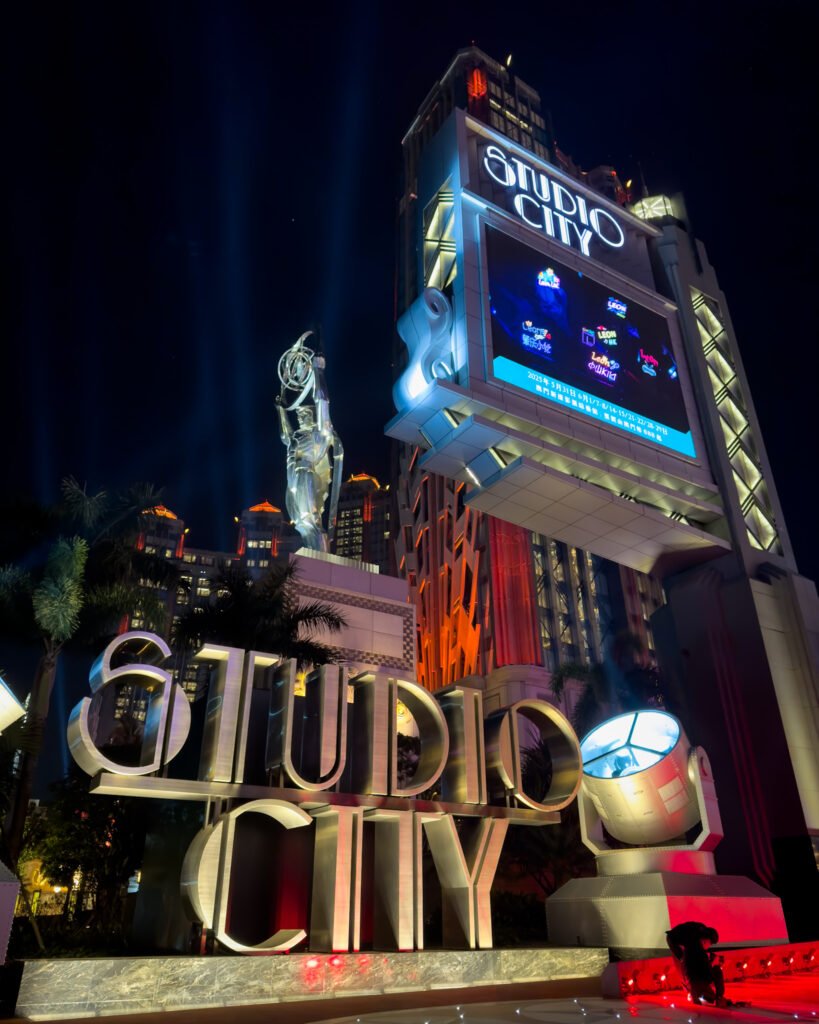


We had dinner at Studio City Macau, where there are plenty of dining options for all tastes. Then, we strolled along the avenue, starting at The Parisian, which has a replica of the Eiffel Tower right in front. We entered The Venetian Macau, where the indoor canals recreate Venice, complete with gondolas, the St. Mark’s Square Tower, and the Rialto Bridge. We ended our night at The Londoner, where we found Big Ben, a replica of the Palace of Westminster, and even the famous Platform 9 ¾.
The Cotai Strip may seem over-the-top, but the truth is, it’s fascinating to see just how grand Macau can be. After a full day, it’s time to rest—there’s still so much more to discover!
Second Day in Macau: Taipa by Day and the Peninsula by Night
Macau kept surprising us on the first day. On the second, we explored Taipa during the day, where modernity and tradition blend seamlessly, and at night, we wandered through the Macau Peninsula, climbing up to a terrace for a unique city view.
Day in Taipa: Modern and Traditional Together
We started the day exploring Taipa, a neighborhood where Chinese and Portuguese influences intertwine, with narrow streets full of surprises around every corner.
Our first stop was at the Taipa Houses, a group of restored colonial houses that tell part of Macau’s Portuguese history. Right next door, we visited Our Lady of Carmel Church, a charming church atop a hill, overlooking the lakes and the skyscrapers of Cotai.
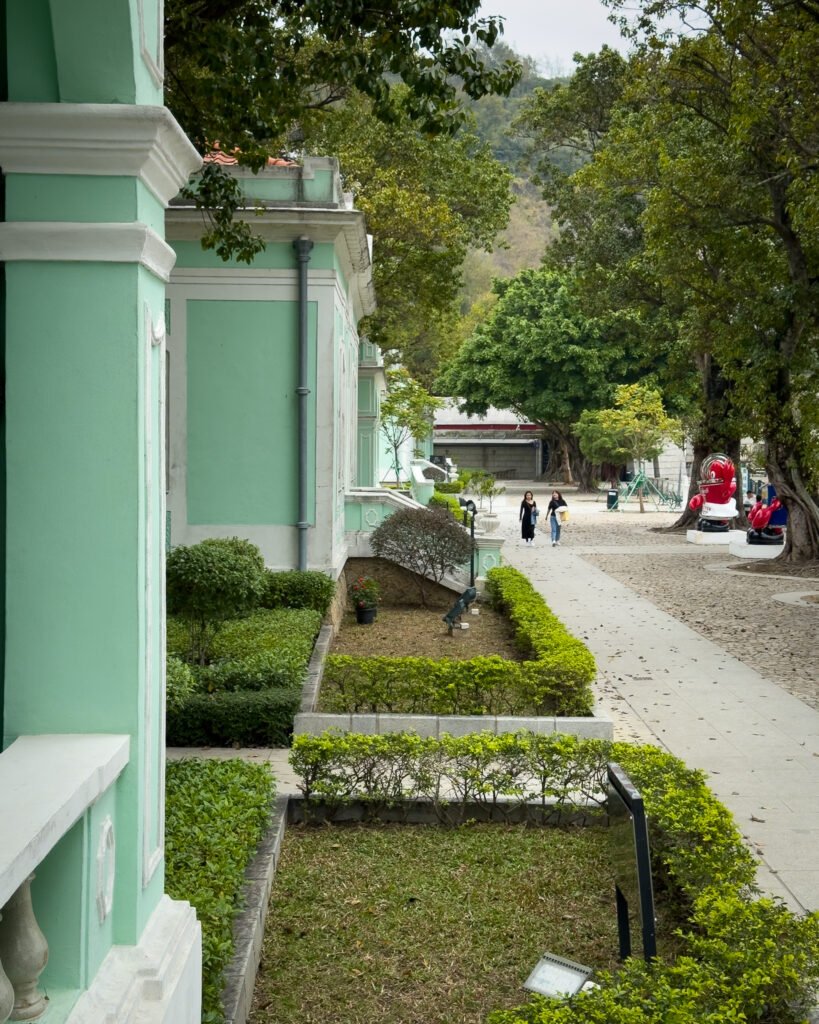

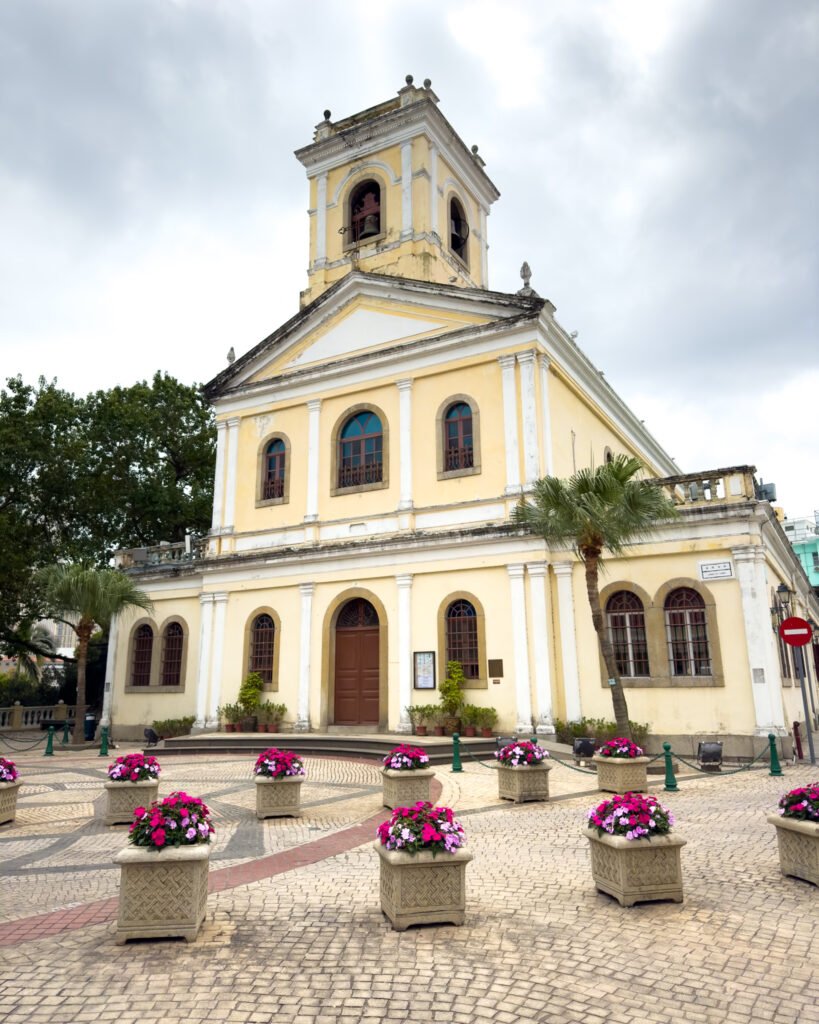
Next, we headed to the Hello Macau Mural, a vibrant wall full of color and personality—perfect for a memorable photo. Before continuing, we stopped by SENG PAN Coffee Roaster for a specialty coffee and a quick recharge.
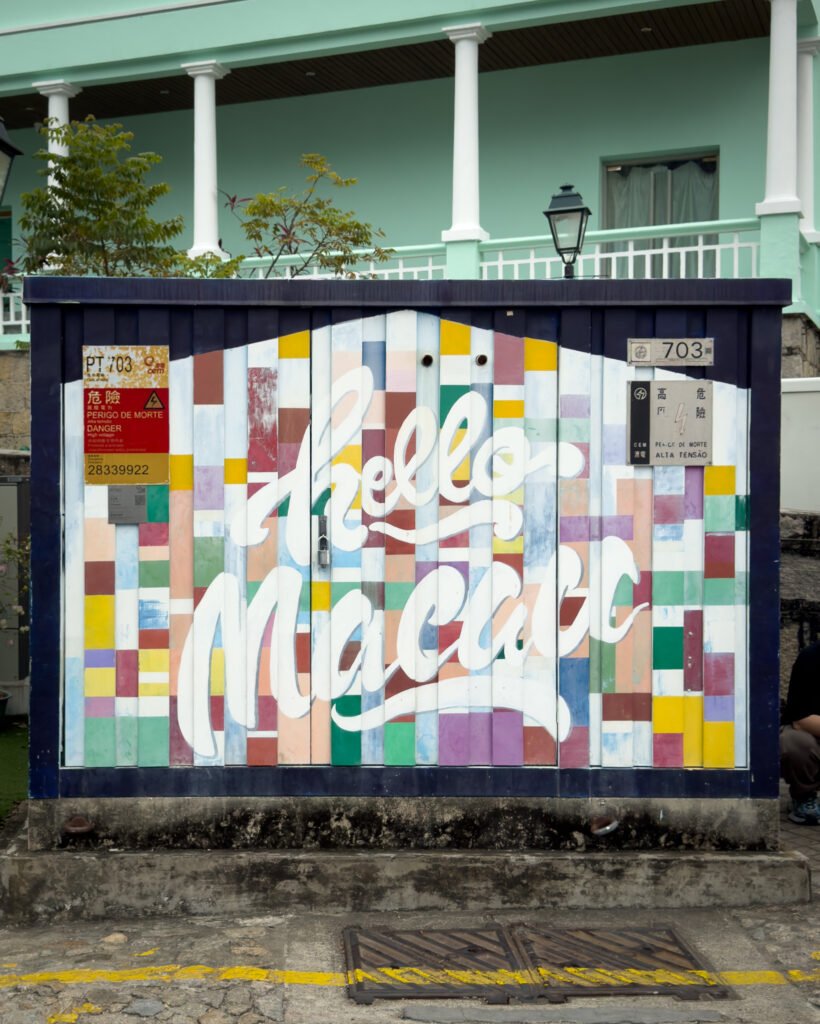
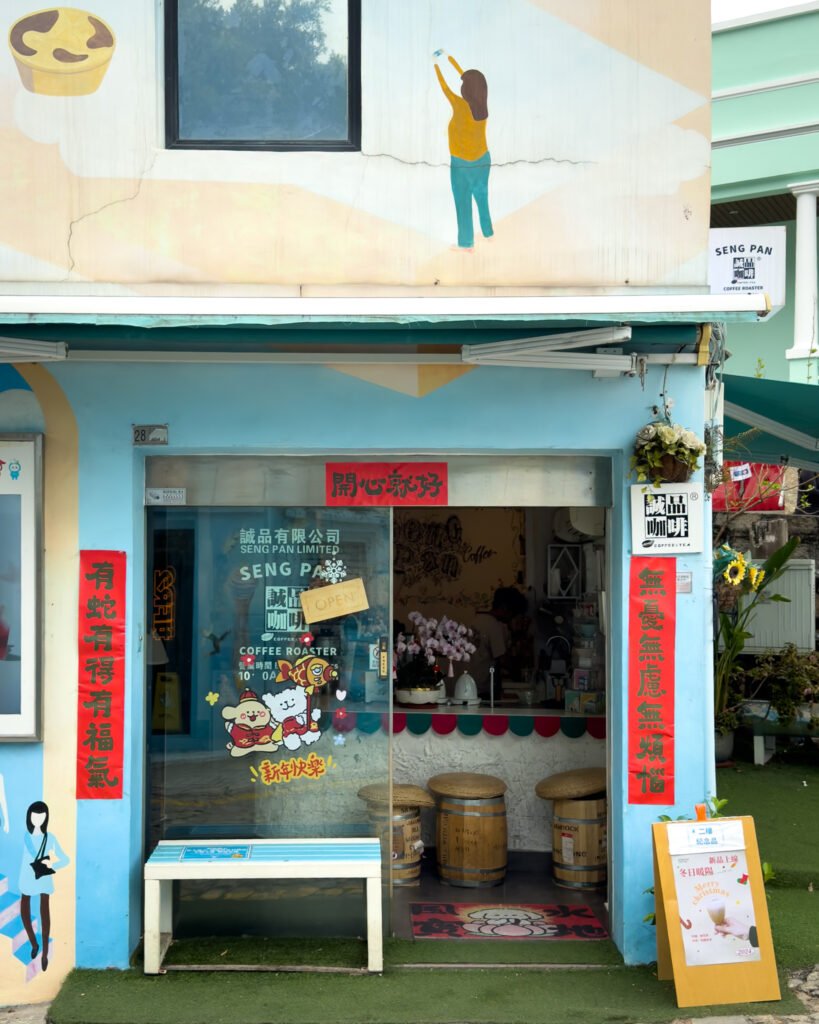
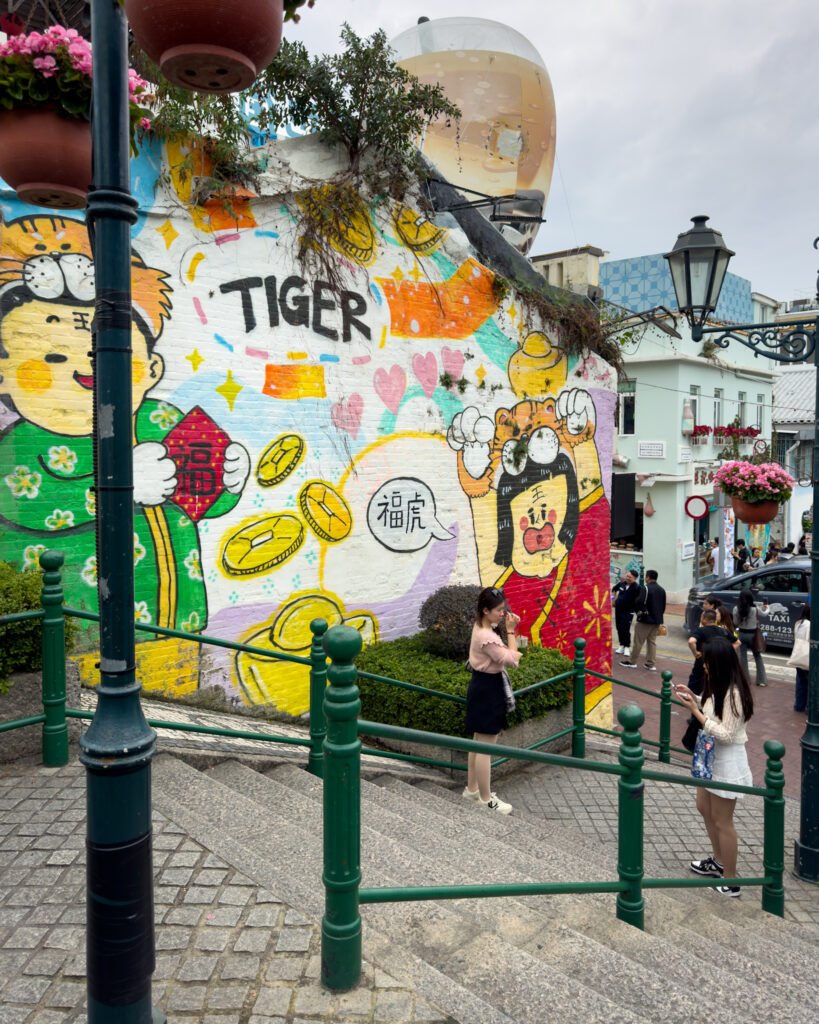
The walk took us to the famous Rua do Cunha, also known as Taipa Food Street. The air was filled with the delicious aromas of street food—warm egg tarts, pork chop buns, and traditional Chinese sweets tempting us at every turn. But we saved our appetite for lunch at Portugália, where a glass of wine and a perfectly cooked Bacalhau à Brás made us feel right at home.
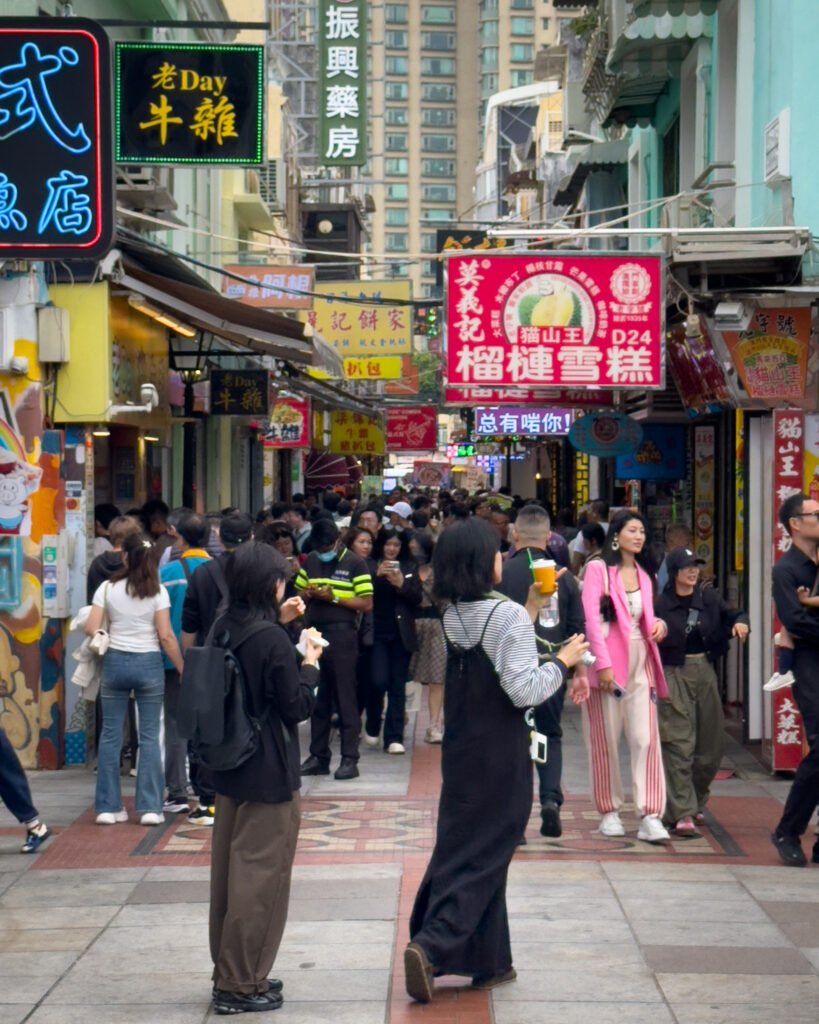

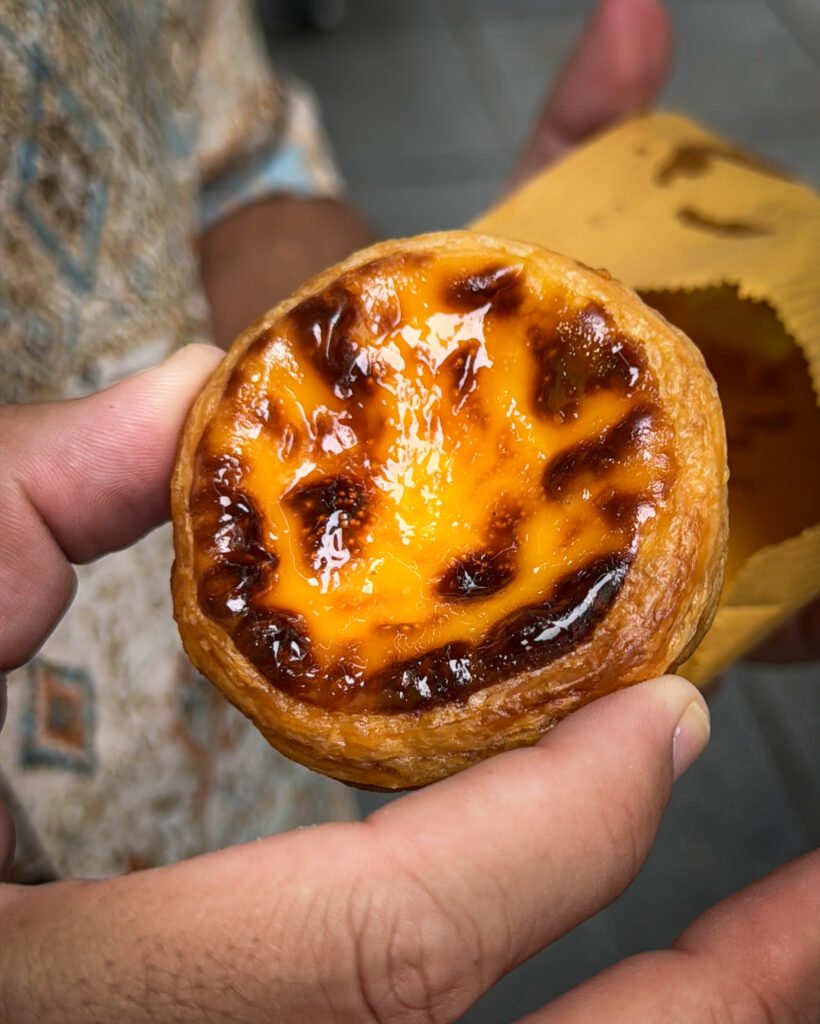
After lunch, we returned to Rua do Cunha for an egg tart at the famous Lord Stow’s Bakery Taipa Store. Then, we passed through Largo Maia de Magalhães, a peaceful square where we took a break at Lamgo Coffee & Roasting, a small, cozy spot perfect for a coffee before heading back to the hotel for some rest.
Night in the Macau Peninsula: Unique Illuminated Views
As night fell, we crossed over to the Macau Peninsula for a special dinner at Sky 21. The restaurant offers one of the best views in the city, with the iconic Grand Lisboa dominating the skyline on one side and the Cotai skyline on the other. The food, cocktails, and atmosphere are truly worth it.
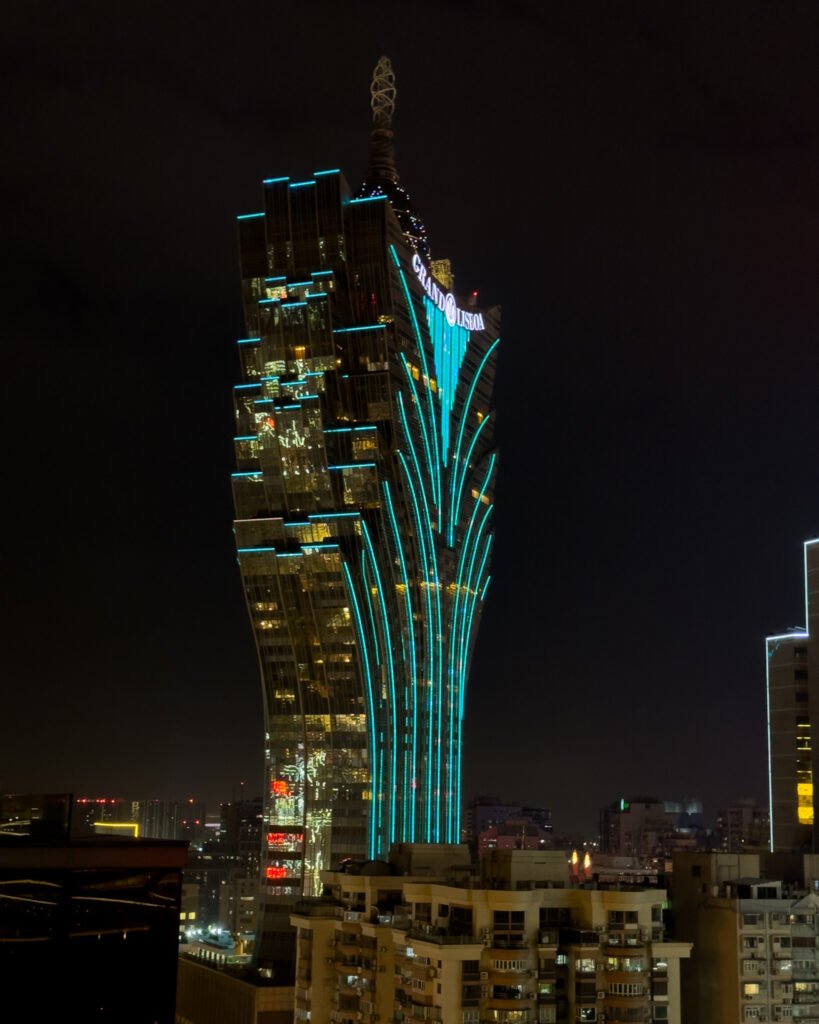

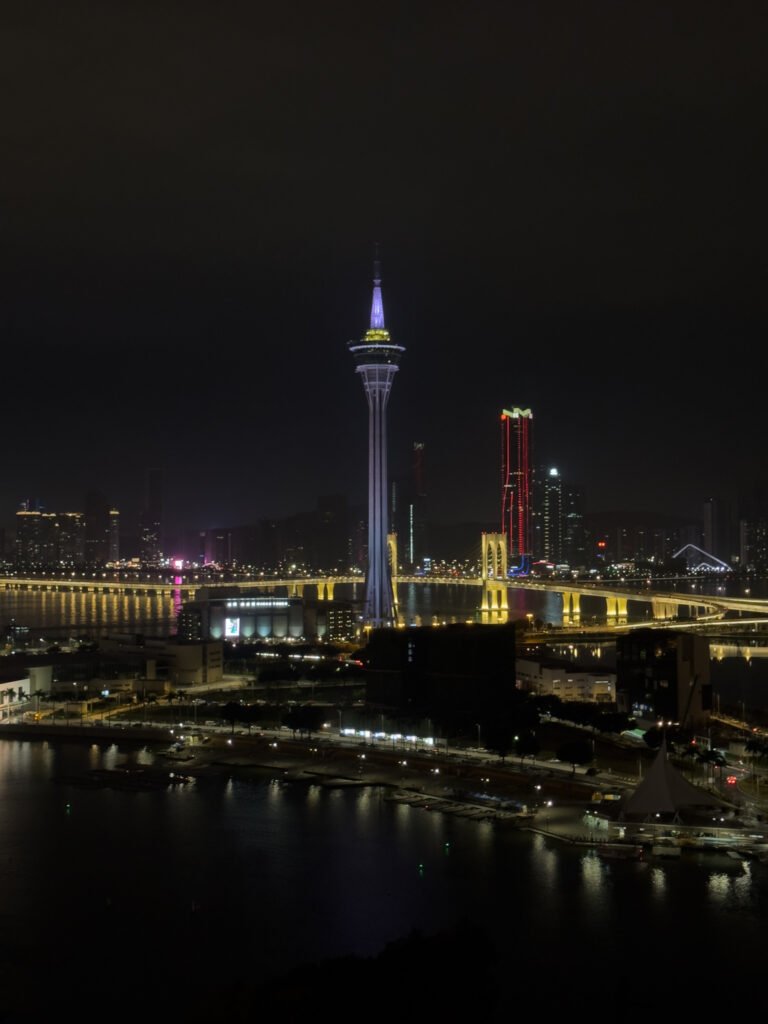
On the way back to the hotel, we took a nighttime stroll through Macau’s illuminated streets. We stopped by the Grand Lisboa and Casino Lisboa, where the dazzling, eccentric architecture takes on a new life at night. Then, we walked through Senado Square, where Portuguese pavement and historic buildings create a fascinating contrast with the modern casinos. We continued to Avenida de Almeida Ribeiro, a bustling street filled with local shops, where Macau continues to pulse even after dark.
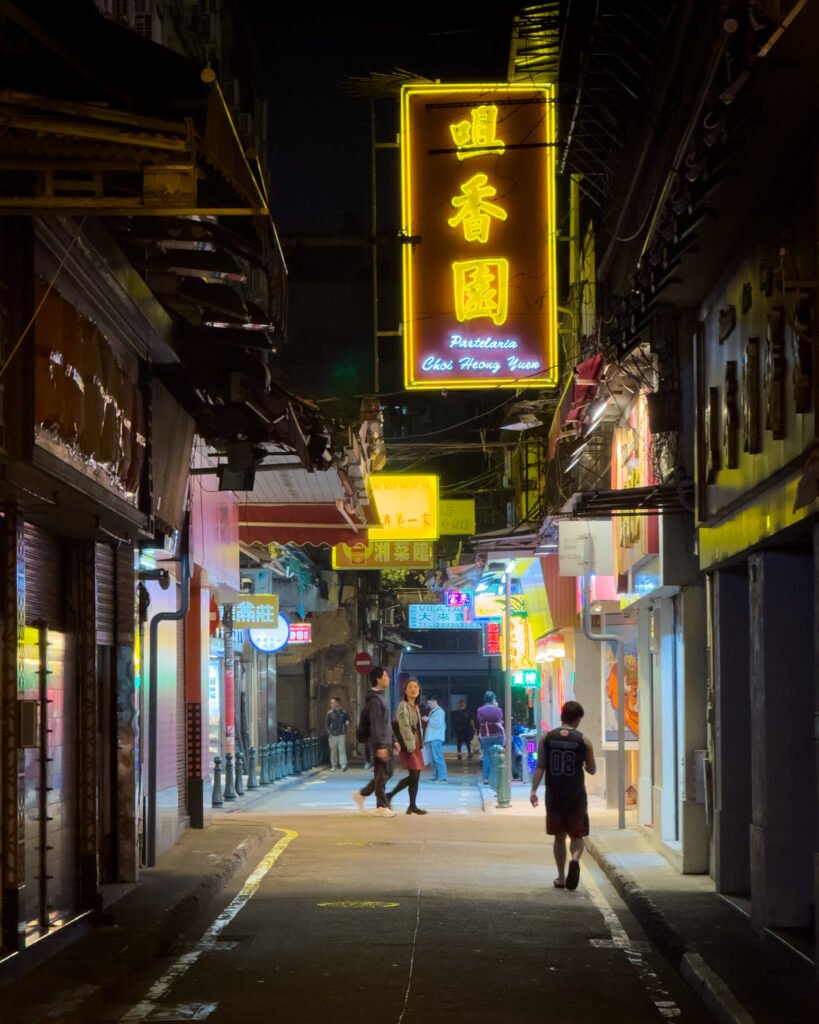

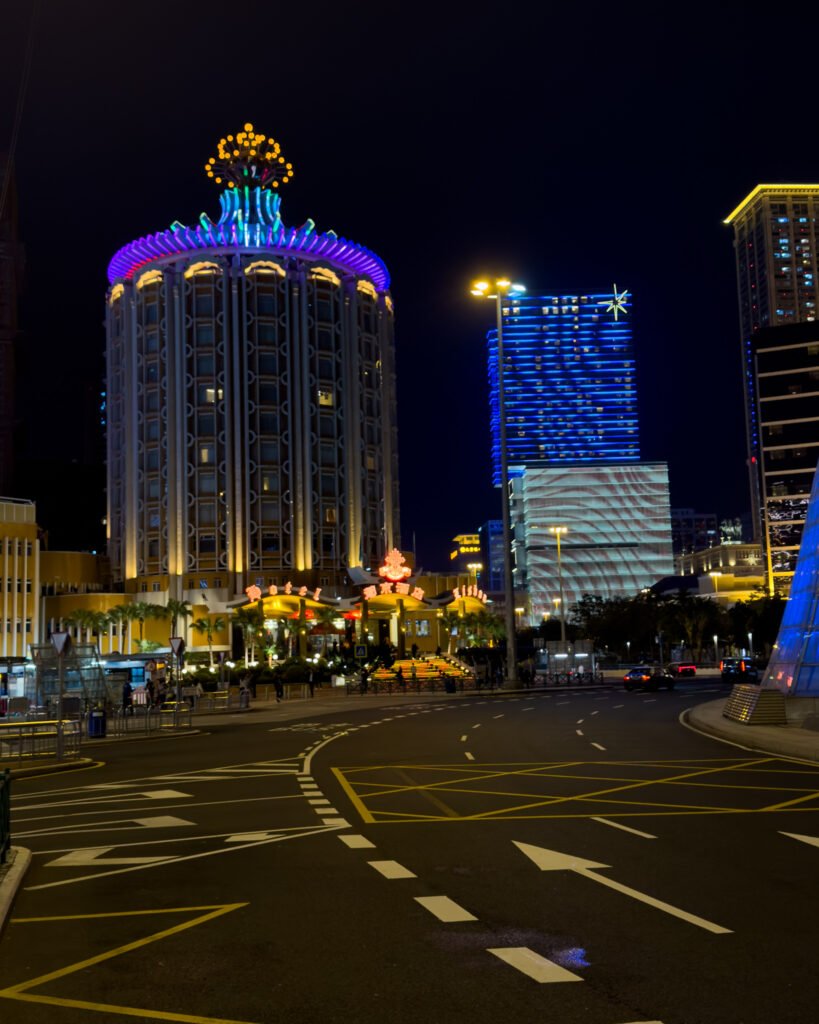
A day full of contrasts, between tradition and modernity, East and West – exactly what makes Macau so special.
Extra Activities in Macau
If you want to add more experiences to your itinerary, here are two must-try suggestions:
- Macau Tower – The best panoramic view of the city! Head up to the observation deck, or if you’re feeling adventurous, try the world’s highest bungee jump. Get your tickets here.
- Macau Golden Reel Figure 8 Ferris Wheel – A unique figure-eight Ferris wheel, perfect for a different perspective of the Cotai Strip. Secure your ticket here.
Extra Tips for Your Trip to Macau
- Is Macau safe? Yes! Macau is one of the safest destinations in Asia. You can walk around freely at any time of day or night without worries.
- How to get around? Public transport in Macau is efficient, and many hotels offer free shuttles to major attractions. Public buses can be paid for with a M Pass card, available in various locations and reducing the fare by half, or directly to the driver with the exact fare of 6 MOP (no change given).
- Currency and payments: The official currency is the Macanese Pataca (MOP), but Hong Kong Dollars are widely accepted. Most ATMs allow free withdrawals.
- Best time to visit: Autumn and winter (October to March) are the best seasons, with milder temperatures and lower humidity.
- Unlimited internet: To stay connected without hassle, an eSIM from Holafly gives you unlimited data without the need to swap physical SIM cards.
- Travel insurance: Although Macau is safe, medical costs can be high. A travel insurance plan like Heymondo ensures 24/7 assistance with no deductibles.



